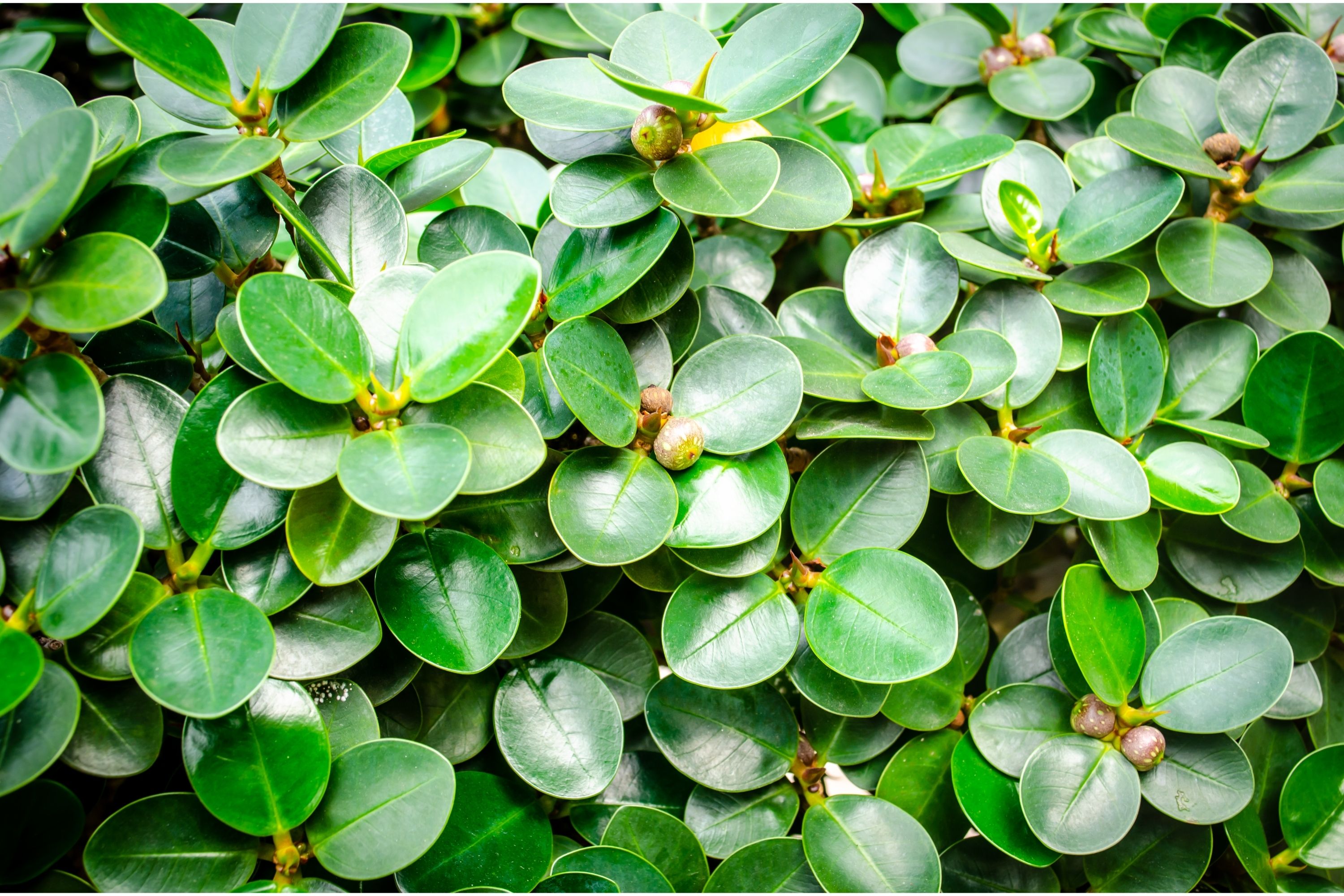Chinese banyan
(Ficus microcarpa)

Description
Ficus microcarpa, also known as Chinese Banyan or Indian Laurel, is a species of evergreen tree that belongs to the fig family, Moraceae. It is native to Southeast Asia and has been widely cultivated in many parts of the world due to its ornamental value and multiple uses. In this article, we will explore the characteristics, cultivation, and uses of Ficus microcarpa in detail. Taxonomy and Nomenclature The scientific name of Ficus microcarpa is derived from the Latin words "Ficus" meaning fig and "microcarpa" meaning small fruit. The species was first described by Carl Linnaeus in 1767, who named it Ficus nitida but later it was reclassified as Ficus microcarpa by Joseph Burtt Davy in 1933. Description Ficus microcarpa is a large evergreen tree that can grow up to 20 meters in height and spread up to 30 meters. The trunk of the tree is often wide and fluted, and the bark is gray and smooth when young, becoming rough and fissured with age. The leaves are glossy, dark green, and leathery, measuring 6-13 cm in length and 2-6 cm in width. The tree produces small, yellowish-green, and inedible fruits, which are only around 1 cm in diameter. Cultivation Ficus microcarpa is a hardy plant that grows well in a wide range of climatic conditions. It prefers warm and humid environments, but can also tolerate moderate drought and low temperatures. It can be grown in a variety of soil types, including loam, clay, and sand, but prefers a well-draining soil. The tree is also tolerant of salt and can grow in coastal areas. Propagation Ficus microcarpa can be propagated by seed, cuttings, or air layering. Seeds should be sown in a well-draining potting mix, and kept moist but not waterlogged. Cuttings can be taken from the tree's softwood or semi-hardwood, dipped in rooting hormone and planted in a potting mix. Air layering involves wrapping a section of a branch with moist sphagnum moss and plastic wrap until roots form, and then cutting the rooted section off and planting it in a potting mix. Maintenance Ficus microcarpa requires little maintenance once established, but it should be pruned regularly to maintain its shape and size. The tree should be watered regularly, especially during dry spells, and fertilized with a balanced fertilizer in spring and summer. Uses Ficus microcarpa is a versatile plant that has multiple uses. It is commonly used as an ornamental plant in parks, gardens, and along streets. The tree's large, glossy leaves and interesting trunk structure make it an attractive focal point. The tree is also often grown as a bonsai, as its small leaves and fast growth make it an ideal candidate for this art form. In addition to its ornamental value, Ficus microcarpa has several practical uses. The wood of the tree is hard and durable, and is used for making furniture, tools, and decorative items. The tree's latex sap has medicinal properties and is used in traditional medicine to treat a range of ailments. The fruit of the tree is also used in some cultures as a laxative. Conclusion Ficus microcarpa is a versatile and valuable plant that is well suited to a wide range of environments. Its attractive appearance, fast growth, and multiple uses make it a popular choice for both ornamental and practical purposes. With proper cultivation and maintenance, Ficus microcarpa can be a long-lasting and rewarding addition to any garden or landscape.
Taxonomic tree:







